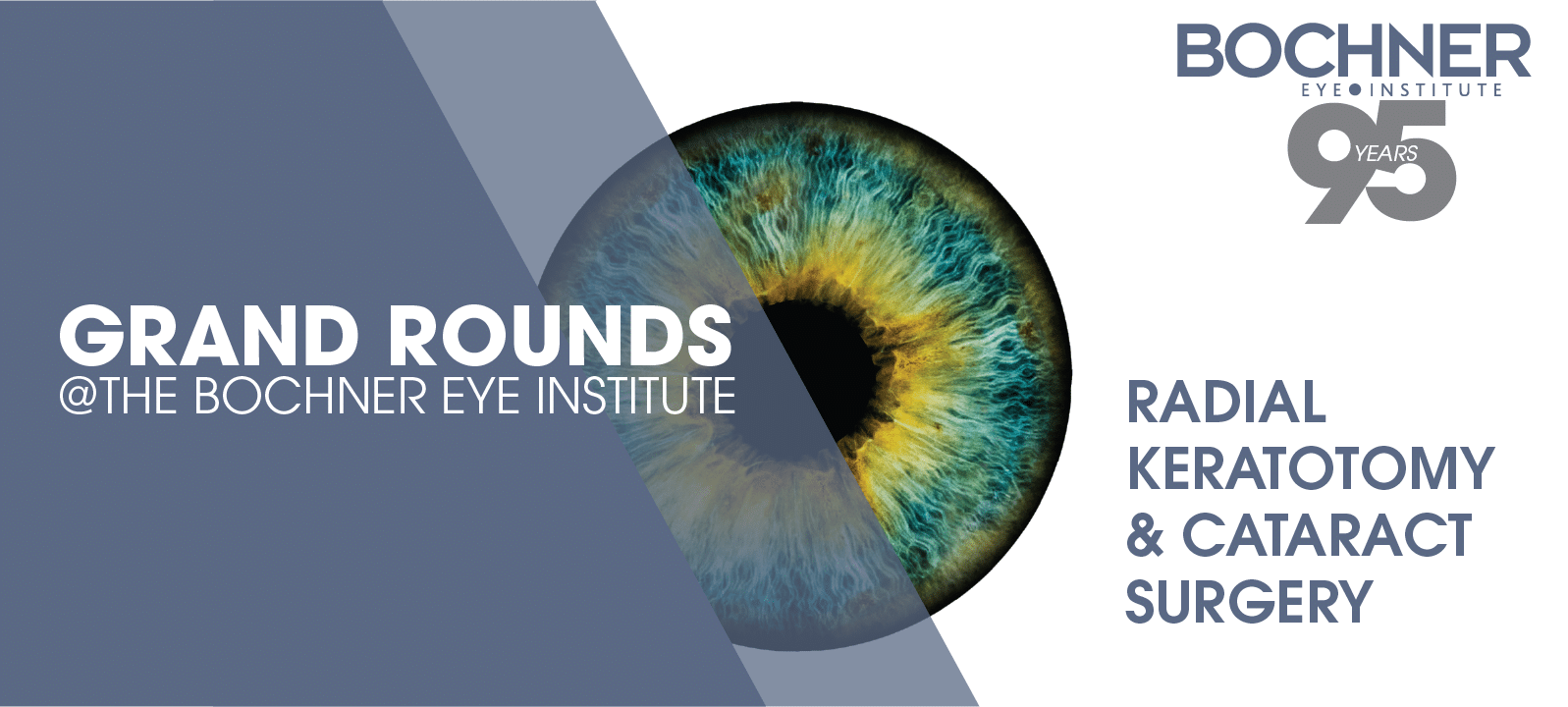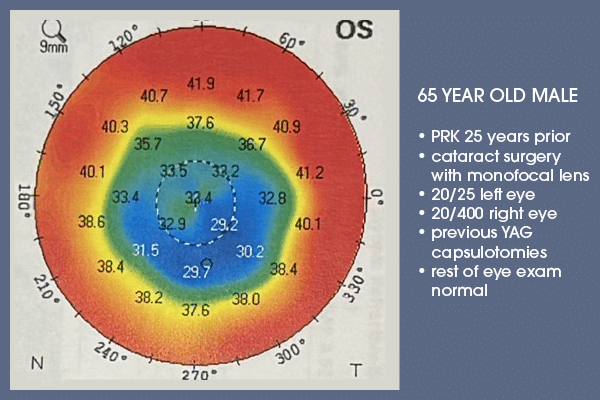
CASE OVERVIEW
A 65-year-old male, who had radial keratotomy (RK) 25 years ago and cataract surgery with a monofocal implant a few years prior, was referred for refractive surgery. His uncorrected visual acuity was 20/25 in the right eye and 20/400 in the left eye. The refractive error in his left eye was +5.50 -2.75 x 140, which allowed corrected visual acuity of 20/25. He had undergone previous YAG capsulotomies in both eyes, and both posterior chamber implants were well positioned. The rest of the eye exam was normal.

REFRACTIVE OPTIONS AND LIMITATIONS:
- IOL Exchange: While an intraocular lens (IOL) exchange could be considered, the open posterior capsule increases the risks of vitreous loss, retinal detachment, and cystoid macular edema.
- PRK or LASIK: The refractive prescription is relatively high for PRK, and LASIK is not recommended on RK corneas due to the increased risk of corneal ectasia.
- Piggyback Lens: A custom piggyback sulcus lens can be ordered and inserted in the sulcus, on top of the original implant, to improve uncorrected acuity.
WHAT WAS DONE:
A custom piggyback lens was ordered from Rayner in Europe to fully correct the distance refractive error. The procedure was straightforward, and the patient experienced quick healing. One week postoperatively, the patient had an uncorrected acuity of 20/25. A superficial keratectomy was performed to remove the corneal epithelium. The epithelium grew back to create a smooth surface with a resultant improvement in best-corrected acuity.
IMPORTANT LESSONS LEARNED:
-
IOL Measurements:
IOL measurements are less accurate in patients with a history of RK. These patients should be counseled about the possibility of a refractive surprise and the need for a second procedure. -
Vision Fluctuations:
Vision fluctuations are common in RK patients, particularly after cataract surgery. It’s usually best to wait for refractive stability, which may take up to 3 months, before proceeding with any additional procedures. -
Cataract Incisions:
When performing cataract surgery in patients with RK, care must be taken not to intersect the RK incisions. In an 8-incision RK, cataract incisions can be made between the RK cuts. For a 16-incision RK, a scleral tunnel incision is generally recommended to avoid the RK incisions safely. -
Piggyback Lenses:
Piggyback lenses are an excellent refractive option, particularly for patients with previous RK or LASIK. These lenses are available in various spherical and cylindrical powers. Additionally, even patients who had cataract or refractive lens exchange (RLE) surgery without prior RK or laser correction may benefit from enhancement with a piggyback lens, although LASIK typically works well for these individuals.


